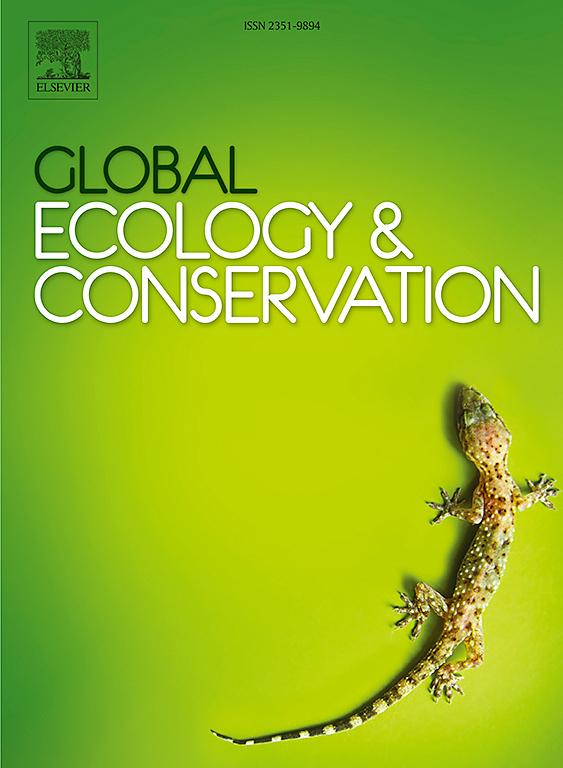Spatialising the ecological impacts of alien species into risk maps
IF 3.5
2区 环境科学与生态学
Q1 BIODIVERSITY CONSERVATION
引用次数: 0
Abstract
Spatial assessments of the ecological impacts of alien species are needed to integrate impacts into biodiversity conservation policies and management strategies. We developed standardised approaches for aggregating impact scores at both species and site levels, synthesising the ecological impacts of alien species into risk maps. We applied these approaches to 33 Australian Acacia species introduced in South Africa. Creating risk maps involves four main steps: (1) perform impact assessment per species; (2) combine impact categories into one score per species; (3) gather species occurrence data into standardised grid cells; and (4) combine impact scores across species per grid cell into a risk map. We proposed six risk maps based on different assumptions of impact aggregation. All risk maps revealed important variation in environmental impacts of alien Acacia species across South Africa. The only exception was the precautionary risk map, which indicated that nearly all the areas occupied by Acacia had high risk, whereas the other risk maps identified between 5 % and 14 % with high risk. Risk maps provide additional information compared to maps of alien species richness and can help identifying areas where greater ecological impacts are likely. The approaches for risk maps can be applied to any taxon with available data on their distribution and ecological impacts. Our approach can be used to identify and prioritise sites with potential high impact. Based on the future risk map, we suggest five management strategies to limit the expansion of impactful species, of for clearing impactful species.
将外来物种的生态影响空间化为风险图
需要对外来物种的生态影响进行空间评价,以便将其纳入生物多样性保护政策和管理战略。我们开发了标准化的方法,在物种和地点水平上汇总影响得分,将外来物种的生态影响综合到风险图中。我们将这些方法应用于引进南非的33种澳大利亚金合欢。创建风险图包括四个主要步骤:(1)对每个物种进行影响评估;(2)将影响类别合并为一个物种评分;(3)将物种发生数据收集到标准化网格单元;(4)将每个网格单元跨物种的影响得分组合成风险图。基于不同的影响聚合假设,提出了六种风险图。所有风险图都揭示了南非各地外来金合欢物种对环境影响的重要变化。唯一的例外是预防性风险图,它表明几乎所有金合欢占据的地区都有高风险,而其他风险图则确定在5% %和14% %之间为高风险。与外来物种丰富度地图相比,风险地图提供了更多的信息,有助于确定可能产生更大生态影响的地区。风险图的方法可以应用于任何有分布和生态影响数据的分类单元。我们的方法可以用来识别和优先考虑具有潜在高影响的地点。基于未来的风险图,我们提出了限制影响物种扩张和清除影响物种的五种管理策略。
本文章由计算机程序翻译,如有差异,请以英文原文为准。
求助全文
约1分钟内获得全文
求助全文
来源期刊

Global Ecology and Conservation
Agricultural and Biological Sciences-Ecology, Evolution, Behavior and Systematics
CiteScore
8.10
自引率
5.00%
发文量
346
审稿时长
83 days
期刊介绍:
Global Ecology and Conservation is a peer-reviewed, open-access journal covering all sub-disciplines of ecological and conservation science: from theory to practice, from molecules to ecosystems, from regional to global. The fields covered include: organismal, population, community, and ecosystem ecology; physiological, evolutionary, and behavioral ecology; and conservation science.
 求助内容:
求助内容: 应助结果提醒方式:
应助结果提醒方式:


